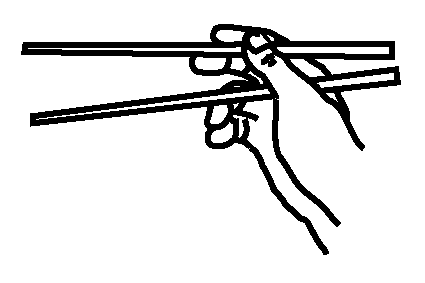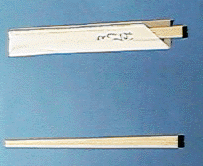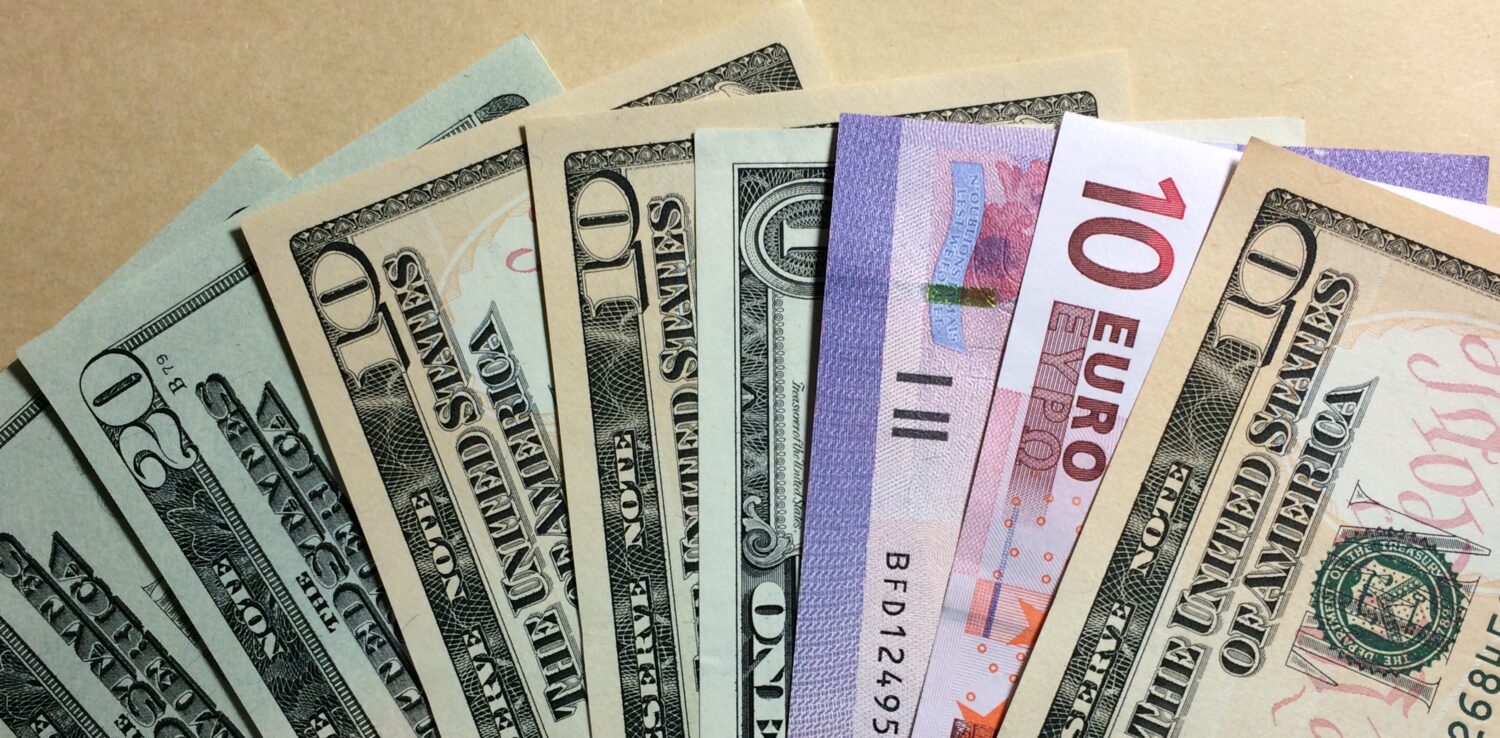Introduction of chopsticks in Japan
When eating in Japan, chopsticks are always provided unless you are eating French, Italian, Indian, or other regional cuisines.
As a side note, the French, Italian, and Indian restaurants mentioned in Japan will also provide chopsticks if you ask them to provide them.
As you can see, eating in Japan is inseparably linked to chopsticks.
Japanese chopstick culture and usage
Statistics show that approximately 30% of the world’s population uses chopsticks to eat, 40% eat with their hands, and the remaining 30% eat with a knife, fork, or spoon. People who use chopsticks on a regular basis are fine, but those who use a knife and fork every day will find it difficult to use chopsticks well as they are using them for the first time in Japan.
Some believe that this is due to differences in food, cooking methods, and the way it is served.
However, everyone uses chopsticks awkwardly at first, but they soon get used to it.
While you are traveling in Japan and eating delicious Japanese food, why not learn a little about chopsticks?
Types and Characteristics of Japanese Chopsticks
Broadly speaking, there are wooden chopsticks, lacquered chopsticks made of wood coated with lacquer and other materials, and split chopsticks with split ends.
Chopsticks made of bamboo are also increasing in number.
The types used in restaurants are probably white wooden chopsticks, lacquered chopsticks, and disposable chopsticks. Some metal chopsticks are also beginning to be used.
Many Japanese wooden chopsticks are tapered at one end only.
One theory for the tapered ends of Japanese chopsticks is that in Japan, people sometimes eat fine foods, and the tips are tapered to make it convenient to eat those foods. This is especially true when eating fish with bones, such as grilled fish, to make it easier to separate the meat from the bones.
Some disposable chopsticks are made by splitting a long, thin piece of wood or bamboo with a split in two lengthwise to form chopsticks. These are inexpensive disposable chopsticks, and are offered at lunchboxes sold in stores and some restaurants.
Shape of chopsticks
Looking at the cross section of a chopstick, there are two types: round and square.
Restaurants serving noodles such as ramen, soba, udon, etc. will provide chopsticks with a square cross section.
If you use chopsticks with a round cross section, these noodles are difficult to eat because the food slides around, so they provide square chopsticks.
Japanese cultural differences in the use of chopsticks
There are many countries around the world where people use chopsticks to eat.
For example, Chinese chopsticks are made of ivory or ceramic. When drinking soup, ceramic spoons are served.
Korean chopsticks are made of metal such as stainless steel. When drinking soup, metal spoons are served.
Japanese chopsticks are originally made of wood.
Except for ramen and other noodle dishes that are enjoyed with soup, only in Japan can a meal be completed with chopsticks alone, usually without the use of a spoon.
In other words, although there are soup-like dishes in Japanese cuisine, such as Osuimono(clear Japanese soup) and Miso soup, you lift the bowl with your hand, take the ingredients with chopsticks, and bring them to your mouth. When sipping soba(buckwheat noodle) or udon(udon noodles) soup, you put your mouth on the bowl.
How to hold chopsticks and etiquette?
Chopsticks are held in the right hand (not necessarily the right hand if you are left-handed). Holding one chopstick in the manner of holding a pencil (pinched with the thumb, index and middle fingers) and the other between the middle and ring fingers (held mainly at two points, the base of the thumb and the tip of the ring finger) is considered the traditional and correct way to hold chopsticks.
How to move them

The one held by the thumb, index finger, and middle finger should be moved, while the one supported by the ring finger should not be moved.
Auxiliary spoon and fork
It is gentle to say how to hold chopsticks with your mouth, but it is quite difficult to master the use of chopsticks.
If necessary, you can request a spoon from the person serving you, as they may be willing to use a spoon with you. Using the spoon as an aid to chopsticks makes it easier to eat.
As in the Thai way of eating, you should hold the spoon in your left hand and chopsticks in your right hand instead of a fork.
Eating without chopsticks
Some people do not use chopsticks when eating sushi. It is extremely difficult to use chopsticks to eat fluffy sushi without breaking it and putting a little soy sauce on it. Do not hesitate to use your hands to eat the sushi, and you will enjoy it even more if you eat it with your hands, because you can also taste the texture of the rice in the sushi.
Note: Do not put too much soy sauce on your sushi. Too much salt will make you thirsty after eating. There are low-sodium soy sauces available, but even so, a little goes a long way. Enjoy the taste of the fresh fish, not the soy sauce taste.
Chopsticks are not used for onigiri either. This is similar to how you eat a sandwich or hot dog.
Pick up chopsticks
In Japanese cuisine, one set of chopsticks is provided for each person.
In addition to this, chopsticks are sometimes provided.
Especially for recently popular platters and nabe dishes that are shared by many people, chopsticks or a common spoon are usually placed and used to share the food. Chopsticks for sharing are used in Japan, where people do not like to use their own chopsticks to take food from a shared plate (nadagashi).
When cooking a one-pot dish in a pot in front of you, chopsticks that have touched raw pork, chicken, etc. are used separately from the chopsticks used for the meal. This is done for hygienic reasons.
Catering and chopstick placement in Japanese cuisine
In serving food in Japanese cuisine, chopsticks are placed horizontally when viewed from the front, and the chopstick tips are usually oriented to the left.
According to one theory, this is based on the idea that everything has a god, even food, and is meant to draw a line between the food in which the god resides and our world.
Types and Designs of Chopsticks
As mentioned earlier, there are three types of chopsticks. Those made of short wood coated with lacquer or synthetic resin are called “lacquered chopsticks. The lacquer coating gives them a unique luster, and they are sometimes decorated with beautiful ornaments.
For home use, some chopsticks are not lacquered to accentuate the beauty of the wood grain.
These can be purchased at souvenir shops. It is a good idea to buy some as souvenirs to take home.
For those who can use chopsticks skillfully, they make excellent gifts from Japan.
Disposable chopsticks are also commonly used as disposable chopsticks. They are made by splitting a long, thin piece of wood or bamboo with a split in two lengthwise. These disposable chopsticks are inexpensive and easy to use, and are widely offered at lunch boxes and some cafeterias.

International Spread and Change of Chopsticks
Although chopsticks are a tableware used mainly in Japan, they have become widely popular around the world in recent years. This is due to the growing popularity of Japanese cuisine and increasing interest in Japanese culture. Many countries and regions operate Japanese restaurants and sushi bars, where traditional Japanese chopsticks are used.
However, the design and materials of chopsticks are changing. Chopsticks made of various materials such as elephant marble, plastic, and metal are being used in other countries. The designs also vary from sophisticated and modern to those with traditional patterns. This shows that chopsticks are accepted as part of cross-cultural exchange.
Environmental Impact of Chopsticks and Sustainable Options SDGS
Basic, wooden, and lacquered chopsticks are environmentally friendly because they are reusable.
The use of wooden disposable chopsticks is also environmentally friendly. Chopsticks are problematic in terms of wood resource consumption and deforestation. Although some people argue that it is better to use wood from thinning, disposable disposable chopsticks still generate a large amount of waste and emit CO2 when they are disposed of.
SUMMARY
This section describes the culture and usage of chopsticks. While there are many different ways of using chopsticks and cultures around the world, Japanese chopsticks reflect the ideas and characteristics of Shintoism. This is an introduction to the various aspects and cultures related to chopsticks. Chopsticks are part of Japan’s food culture and traditions, and their usage and manners are imbued with meaning and courtesy. Enjoying a meal with chopsticks while observing proper holding and etiquette is one way to experience Japanese food culture. We have the power to realize a sustainable future.
Reference: Ogura Tomoko
